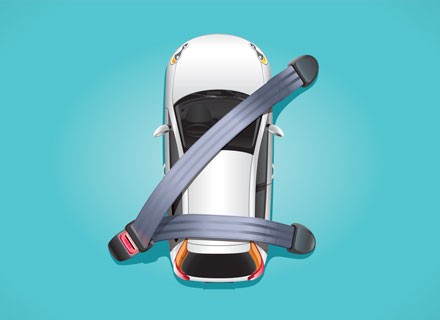The pandemic has forced every industry to review its operating models and approaches to customer experience in light of rapidly changing customer needs and expectations and evolving cultural behaviours. This is particularly pertinent when it comes to motor insurance as global lockdowns, social distancing measures and sweeping changes to working habits have led to a huge reduction in car usage.
Ripe for change
According to the J.D. Power 2020 Auto Claims Satisfaction study, there was a 22 percent decrease in car insurance claims since the pandemic in the US. In the UK, we have seen a few insurers like Admiral offer cash refunds to customers as a result of travelling reduced miles. While it is a nice gesture, it is not one reflective of the disparity of the situation—both historical and present. That is because the insurance industry has been ripe for change for years—long before Covid became part of the vernacular. Motor insurance, in particular its pricing models, are seen as opaque and unfair, and because it is mandatory if you own a car, motor insurance still feels like a tax rather than a purchase decision. According to this 2018 study (BritainThinks) by the Association of British Insurers, seven in ten (70 percent) insurance customers agree that, no matter what they do, their insurance premiums seem to go up every year.
There is no doubt consumers are overwhelmingly dissatisfied with the level of service they are receiving so the industry is at an inflection point. It’s a situation not dissimilar to that of the banking sector some years ago. Early reticence towards online channels was quickly squashed that means—over a decade on—the industry is a poster boy for delivering a seamless engaging digital experience in everything from account opening to payment methods.
Dynamic digital experiences are sought after
Not least because customer expectations have increased markedly, people now rightly expect insurance products and services to measure up to the experiences they enjoy with their other consumer purchases. They expect to be able to review their usage data in real-time, like they do with their fitness apps, access financial statements like they do with their banks (Monzo) and communicate like they do through messaging apps. Today’s insurance customer wants a dynamic and engaging digital experience.
Instead, what they are getting is cumbersome and one-dimensional products because the insurance industry has been slow to adapt to technology innovation. Efforts to digitise and optimise customer experience have largely failed. Insurance has rested on its laurels for too long. Insurers should already be considering how to embrace consumer trends in their products for both the short and long term. In many cases, this means catching-up to what is current and urgently putting measures in place to scale and pivot their products and services to respond to ongoing changes in driving habits and digital consumption. Insurers simply won’t be able to survive if they continue to treat customers as they have done up until now – they can’t afford the shockingly low retention rates that they’ve got away with until now.
This is because a holy trinity of mobility, customer expectations and democratised data are dictating innovation. New rating engines and new products are only part of the solution. How insurers interact, engage, communicate and manage data will also be critical. Customers will want to know how answering a set of questions can truly reflect their premium price fairly. The data that can be provided at the onset (and during the life of the project) from open banking integrations, activated vehicle safety features, use of assisted driving features and usage data are all elements that will contribute to future policies. Insurance companies urgently need to put the customer first or they risk losing market share and becoming irrelevant.
Not seeing the big picture?
Traditional players and those insurers unwilling to meet the speed and scale of change are not going to retain the level of customers they have had before, which then by proxy means they will need to spend more money to go out and win customers back. The answer lies in evolving to offer a product that will retain customers and evolve the wider industry at the same time. As an example, we have seen years of insurers concentrating heavily on achieving a high-ranking on price comparison sites, which has led to a situation where, largely, the industry has a commoditised product with little differentiation or USP.
Yet, we are witnessing major macro changes to motor insurance in the form of partially assisted driving on the road and the rise of electric vehicles (EV). Anyone who has an EV is immediately penalised on price, in some cases quite heavily, even though EVs are safer on the road. This is essentially due to fear of change within the insurance industry and a misguided desire to keep the status quo. Because there currently is not enough volume for insurers to insure EV drivers by their normal statistical models, they have tried to ignore the situation, rather than develop the innovative solutions that are needed (and will undoubtedly happen anyway).
Obsessed with price comparison sites and a race to the bottom on pricing, insurers have neglected to see the bigger picture. Many simply haven’t developed the right mindsets, cultures and approaches to respond to changes in consumer needs and to get on the front foot through innovation. They’re putting themselves in a position that the only way that they can stay competitive is to lobby governments not to allow these types of technology on the road. And that’s why, rather than focusing on getting ahead of new (and some would say inevitable) technology innovation and collaborating on solutions to potential challenges, some insurers and legal firms appear to be focused on stifling and delaying progress.
Insurers should also be taking an active role in encouraging policyholders to consider the micro (air pollutants) and macro (greenhouse gases) environmental impact their car usage has. It is estimated that 36,000 deaths every year are caused by air pollution in London. This has led to the introduction of the ultra-low emission zone, which will expand from 25th October 2021 to create a single larger zone up to the North Circular Road (A406) and South Circular Road (A205). Insurers have no reason not to be helping educate drivers about the pollution their cars emit and helping them to consider how and when they drive. They could be advising on the best times of day to use their car and the best routes to take to limit environmental impact. Intervention, in support of governmental actions, can help to save lives.
We are at a nexus point with car technology of changing user behavior, changing customer expectations and changing technology. And right now, progress is being held back because of the insurance industry. Businesses in the insurance industry need to make a choice and pick a side—they can either be an inhibitor or an innovator but, in the long-term, there’s only going to be one winner.



